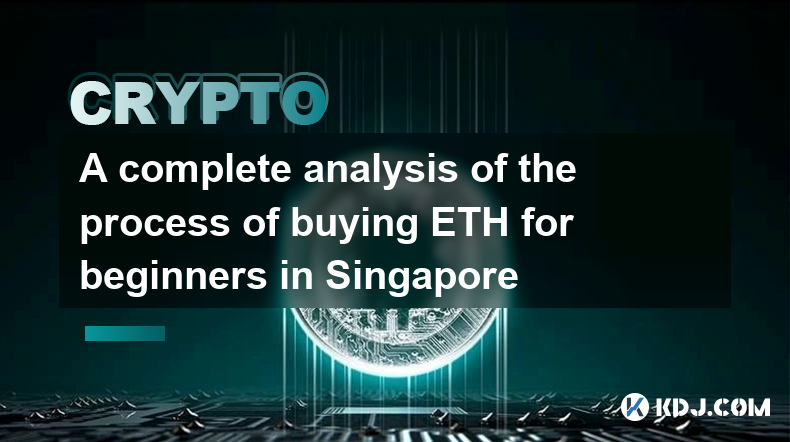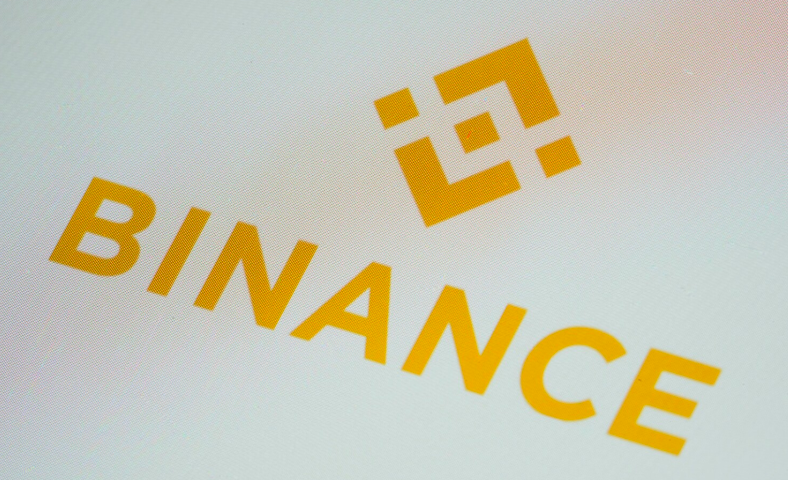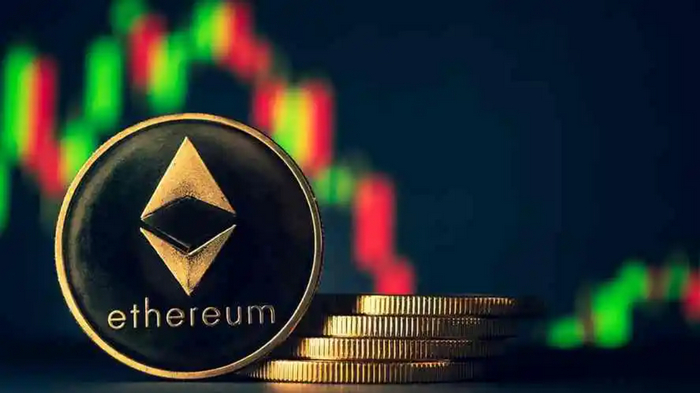-
 Bitcoin
Bitcoin $108,262.4325
-1.40% -
 Ethereum
Ethereum $2,518.2882
-2.94% -
 Tether USDt
Tether USDt $1.0003
-0.01% -
 XRP
XRP $2.2262
-1.71% -
 BNB
BNB $653.9254
-1.55% -
 Solana
Solana $148.1036
-3.11% -
 USDC
USDC $1.0000
0.01% -
 TRON
TRON $0.2829
-1.45% -
 Dogecoin
Dogecoin $0.1639
-4.82% -
 Cardano
Cardano $0.5742
-4.43% -
 Hyperliquid
Hyperliquid $38.9506
-3.95% -
 Sui
Sui $2.9040
-4.34% -
 Bitcoin Cash
Bitcoin Cash $484.8307
-2.62% -
 Chainlink
Chainlink $13.1971
-3.73% -
 UNUS SED LEO
UNUS SED LEO $9.0822
0.51% -
 Avalanche
Avalanche $17.8613
-4.01% -
 Stellar
Stellar $0.2385
-2.26% -
 Toncoin
Toncoin $2.7570
-3.88% -
 Shiba Inu
Shiba Inu $0.0...01145
-3.99% -
 Litecoin
Litecoin $86.9999
-2.43% -
 Hedera
Hedera $0.1538
-3.90% -
 Monero
Monero $313.7554
-2.03% -
 Polkadot
Polkadot $3.3681
-5.08% -
 Dai
Dai $1.0000
0.00% -
 Ethena USDe
Ethena USDe $1.0001
-0.01% -
 Bitget Token
Bitget Token $4.4401
-2.97% -
 Uniswap
Uniswap $6.9644
-8.41% -
 Pepe
Pepe $0.0...09666
-4.79% -
 Aave
Aave $266.5686
-5.04% -
 Pi
Pi $0.4713
-4.95%
A complete analysis of the process of buying ETH for beginners in Singapore
Purchase Ethereum in Singapore, you can choose a reputable platform such as Binance Singapore or Coinbase. After registering an account and completing identity verification, you can recharge through bank transfer or credit card, and enter the trading interface to purchase ETH.
Apr 11, 2025 at 03:24 pm

In Singapore, with the development of the cryptocurrency market, more and more beginners are interested in buying Ethereum (ETH). As an important cryptocurrency, Ethereum’s purchase process may be a bit complicated for beginners. The following is a detailed introduction to the complete process of purchasing ETH in Singapore.
Choose the right cryptocurrency trading platform
Research platform reputation : In Singapore, there are some well-known and compliant trading platforms to choose from, such as Binance Singapore, Coinbase, etc. You can judge its credibility by checking the platform's user reviews, industry rankings, and whether it is regulated by relevant regulatory agencies. For example, Binance occupies an important position in the global cryptocurrency trading field, Binance Singapore also operates in accordance with local regulations; Coinbase is known for its user-friendly interface and high security.
Comparison of transaction fees : The handling fees charged by different platforms for transactions vary. Some platforms charge a certain proportion of the transaction amount, such as 0.1% to 0.5%; some platforms may have fixed fees. When making a choice, you should compare which platform's cost is more cost-effective based on your expected transaction size and frequency. For example, if you plan to conduct small and high-frequency transactions, then platforms with lower fixed fees may be more suitable; if they are large and low-frequency transactions, platforms with proportional fees and lower proportions will be more economical.
Confirm payment method support : Check whether the platform supports payment methods that are convenient for you. In Singapore, common payment methods include bank transfers (such as bank transfers via PayNow or FAST), credit/debit card payments, etc. For example, Coinbase supports SGD recharge using PayNow or FAST bank transfers and has zero handling fees, which is a very convenient way to recharge for local users in Singapore.
Register a trading platform account

Visit the official website of the platform : Take Binance Singapore as an example, enter the official website of Binance Singapore in the browser and enter the homepage of its website.
Click the Registration button : Find buttons such as "Register" or "Create Account" on the homepage and click to enter the registration process.
Fill in the registration information : You usually need to provide your email address and set a password with a higher strength. The password should contain letters (case), numbers and special characters to ensure the security of your account. At the same time, you may also need to enter some basic personal information, such as name.
Complete identity verification : According to Singapore’s regulatory requirements and the platform’s own security measures, you need to perform identity verification. This may include uploading photos of valid ID documents such as your ID card, passport, and the possibility of biometric verification such as facial recognition. The purpose of identity verification is to prevent illegal activities such as money laundering and ensure the security of funds of trading platforms and users. For example, when registering Coinbase, you can use Singpass to achieve seamless registration, securely set up your account, and start trading in just 3 minutes, where Singpass is used for the authentication process.
Recharge funds to the transaction account
Log in to the trading platform : Use the account and password you set when registering to log in to the selected trading platform.
Find the recharge entrance : Generally, options such as "recharge" or "deposit funds" can be found in the account interface or fund management sector.
Choose the recharge method :
Bank Transfer : If you choose bank transfer, the platform will provide you with bank account information, and you need to transfer money from your local bank account in Singapore to the designated account. When transferring money, carefully check the collection account information to ensure that it is accurate. After the transfer is completed, it may take several working days to arrive. The specific time depends on the bank's processing speed. For example, through FAST bank transfers, the arrival time may be relatively fast, but it may also take 1-2 working days; while some traditional bank transfers may take 3-5 working days.
Credit card/debit card payment : Some platforms support credit card or debit card recharge. When choosing this method, you need to enter your bank card information, including card number, validity period, CVV code, etc. Recharge with credit/debit cards is usually faster and funds can be received instantly, but a higher handling fee may be charged, and the handling fee ratio may be around 3% - 5%.
Purchase ETH on the trading platform

Enter the trading interface : After logging into the trading platform, find related sectors such as "Trade" or "Market" and enter the cryptocurrency trading page.
Search for ETH trading pairs : On the trading page, there is usually a search box, enter "ETH" and find the trading pairs corresponding to the Singapore Dollar (SGD) or other fiat currencies you recharge, such as "ETH/SGD".
Select a transaction type :
Market order : If you want to buy ETH as soon as possible, without considering the slight fluctuations in the current price, you can choose a market order. The market order will immediately execute the transaction at the best price in the current market. For example, the current price of one selling price in the market is S$3,000. After you place the market order, you will quickly buy your specified amount of ETH at a price of around S$3,000.
Limit order : If you want to buy ETH at a specific price, you can set a limit order. For example, if you think the ETH price will fall to S$2,800 and then buy it, then you can set up a limit order. When the market price drops to S$2,800 or less, the system will automatically execute the transaction to help you buy ETH. But it should be noted that if the market price does not fall to the limit you set, the transaction may not be completed.
Enter the purchase quantity and confirm the transaction : Enter the ETH quantity you want to purchase in the trading interface, carefully check the transaction amount, handling fee and other information, and after confirming that it is correct, click the "Purchase" or "Step Order" button to complete the transaction. After the transaction is completed, the ETH you purchased will be displayed in your trading platform account assets.
Transfer the purchased ETH to your personal wallet (optional but recommended)
Choose a personal wallet : Personal wallets are divided into hot wallets and cold wallets. Hot wallets such as MetaMask are a browser plug-in wallet that is easy to use and suitable for users who frequently conduct transactions; cold wallets such as Ledger Nano S are hardware wallets with higher security and are suitable for long-term storage of large amounts of ETH. You can choose according to your use needs and security requirements.
Create or import wallet : If you are creating a new wallet, follow the wallet’s instructions to complete the creation process, and important information such as the wallet address and private key will be generated during the process. The private key must be kept properly and cannot be disclosed to anyone, because the private key is the key to controlling wallet assets. If you are importing an existing wallet, you need to enter the corresponding mnemonic word or private key and other information to restore the wallet.
Get wallet address : Find options such as "Receive" or "Recharge" in your personal wallet, and your ETH receiving address will be displayed here. An address is usually a long string of characters composed of numbers and letters.
Perform withdrawal operations on the trading platform : Return to the trading platform, find functional options such as "withdrawal" or "transfer out", select ETH as the withdrawal currency, and then paste the ETH receiving address you just obtained in your personal wallet into the withdrawal address bar of the trading platform. Enter the amount of ETH you want to transfer out, and carefully check the withdrawal address and quantity information again to ensure that it is accurate, because once the withdrawal is submitted, the assets will not be withdrawn. After submitting the cash withdrawal request, the trading platform will review and process, and the processing time may range from several minutes to several hours, depending on the network congestion and the processing speed of the trading platform. After the withdrawal is successful, you can view the transferred ETH in your personal wallet.
Disclaimer:info@kdj.com
The information provided is not trading advice. kdj.com does not assume any responsibility for any investments made based on the information provided in this article. Cryptocurrencies are highly volatile and it is highly recommended that you invest with caution after thorough research!
If you believe that the content used on this website infringes your copyright, please contact us immediately (info@kdj.com) and we will delete it promptly.
- Bitcoin's Pattern Break: Are HODLers the Key to the Next Surge?
- 2025-07-04 18:50:12
- Bitcoin Price, Trump's Bill, and the $150K Dream: A NYC Take
- 2025-07-04 19:50:12
- Ethereum, LILPEPE, and the July Bounce: Will Pepe Steal ETH's Thunder?
- 2025-07-04 19:10:12
- Binance Institutional Loans: Unlocking 4x Leverage and Zero Interest for Whales
- 2025-07-04 19:15:12
- Bitcoin Bull Run: Analysts Eye Peak in Late 2025?
- 2025-07-04 19:20:13
- Pepe Indicators, Bullish Forecast: Can the Meme Coin Rally?
- 2025-07-04 19:25:12
Related knowledge

How to customize USDT TRC20 mining fees? Flexible adjustment tutorial
Jun 13,2025 at 01:42am
Understanding USDT TRC20 Mining FeesMining fees on the TRON (TRC20) network are essential for processing transactions. Unlike Bitcoin or Ethereum, where miners directly validate transactions, TRON uses a delegated proof-of-stake (DPoS) mechanism. However, users still need to pay bandwidth and energy fees, which are collectively referred to as 'mining fe...

USDT TRC20 transaction is stuck? Solution summary
Jun 14,2025 at 11:15pm
Understanding USDT TRC20 TransactionsWhen users mention that a USDT TRC20 transaction is stuck, they typically refer to a situation where the transfer of Tether (USDT) on the TRON blockchain has not been confirmed for an extended period. This issue may arise due to various reasons such as network congestion, insufficient transaction fees, or wallet-rela...

How to cancel USDT TRC20 unconfirmed transactions? Operation guide
Jun 13,2025 at 11:01pm
Understanding USDT TRC20 Unconfirmed TransactionsWhen dealing with USDT TRC20 transactions, it’s crucial to understand what an unconfirmed transaction means. An unconfirmed transaction is one that has been broadcasted to the blockchain network but hasn’t yet been included in a block. This typically occurs due to low transaction fees or network congestio...

How to check USDT TRC20 balance? Introduction to multiple query methods
Jun 21,2025 at 02:42am
Understanding USDT TRC20 and Its ImportanceUSDT (Tether) is one of the most widely used stablecoins in the cryptocurrency market. It exists on multiple blockchain networks, including TRC20, which operates on the Tron (TRX) network. Checking your USDT TRC20 balance accurately is crucial for users who hold or transact with this asset. Whether you're sendi...

What to do if USDT TRC20 transfers are congested? Speed up trading skills
Jun 13,2025 at 09:56am
Understanding USDT TRC20 Transfer CongestionWhen transferring USDT TRC20, users may occasionally experience delays or congestion. This typically occurs due to network overload on the TRON blockchain, which hosts the TRC20 version of Tether. Unlike the ERC20 variant (which runs on Ethereum), TRC20 transactions are generally faster and cheaper, but during...

The relationship between USDT TRC20 and TRON chain: technical background analysis
Jun 12,2025 at 01:28pm
What is USDT TRC20?USDT TRC20 refers to the Tether (USDT) token issued on the TRON blockchain using the TRC-20 standard. Unlike the more commonly known ERC-20 version of USDT (which runs on Ethereum), the TRC-20 variant leverages the TRON network's infrastructure for faster and cheaper transactions. The emergence of this version came as part of Tether’s...

How to customize USDT TRC20 mining fees? Flexible adjustment tutorial
Jun 13,2025 at 01:42am
Understanding USDT TRC20 Mining FeesMining fees on the TRON (TRC20) network are essential for processing transactions. Unlike Bitcoin or Ethereum, where miners directly validate transactions, TRON uses a delegated proof-of-stake (DPoS) mechanism. However, users still need to pay bandwidth and energy fees, which are collectively referred to as 'mining fe...

USDT TRC20 transaction is stuck? Solution summary
Jun 14,2025 at 11:15pm
Understanding USDT TRC20 TransactionsWhen users mention that a USDT TRC20 transaction is stuck, they typically refer to a situation where the transfer of Tether (USDT) on the TRON blockchain has not been confirmed for an extended period. This issue may arise due to various reasons such as network congestion, insufficient transaction fees, or wallet-rela...

How to cancel USDT TRC20 unconfirmed transactions? Operation guide
Jun 13,2025 at 11:01pm
Understanding USDT TRC20 Unconfirmed TransactionsWhen dealing with USDT TRC20 transactions, it’s crucial to understand what an unconfirmed transaction means. An unconfirmed transaction is one that has been broadcasted to the blockchain network but hasn’t yet been included in a block. This typically occurs due to low transaction fees or network congestio...

How to check USDT TRC20 balance? Introduction to multiple query methods
Jun 21,2025 at 02:42am
Understanding USDT TRC20 and Its ImportanceUSDT (Tether) is one of the most widely used stablecoins in the cryptocurrency market. It exists on multiple blockchain networks, including TRC20, which operates on the Tron (TRX) network. Checking your USDT TRC20 balance accurately is crucial for users who hold or transact with this asset. Whether you're sendi...

What to do if USDT TRC20 transfers are congested? Speed up trading skills
Jun 13,2025 at 09:56am
Understanding USDT TRC20 Transfer CongestionWhen transferring USDT TRC20, users may occasionally experience delays or congestion. This typically occurs due to network overload on the TRON blockchain, which hosts the TRC20 version of Tether. Unlike the ERC20 variant (which runs on Ethereum), TRC20 transactions are generally faster and cheaper, but during...

The relationship between USDT TRC20 and TRON chain: technical background analysis
Jun 12,2025 at 01:28pm
What is USDT TRC20?USDT TRC20 refers to the Tether (USDT) token issued on the TRON blockchain using the TRC-20 standard. Unlike the more commonly known ERC-20 version of USDT (which runs on Ethereum), the TRC-20 variant leverages the TRON network's infrastructure for faster and cheaper transactions. The emergence of this version came as part of Tether’s...
See all articles

























































































